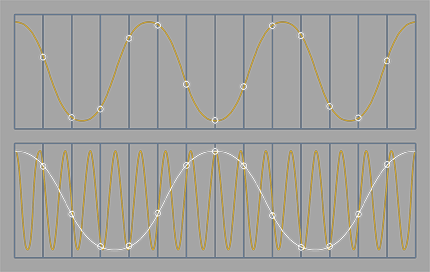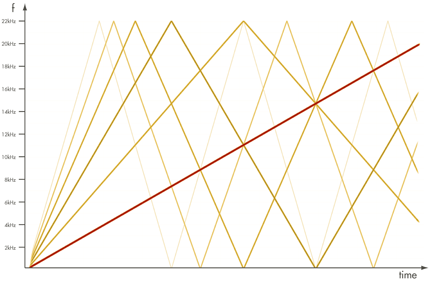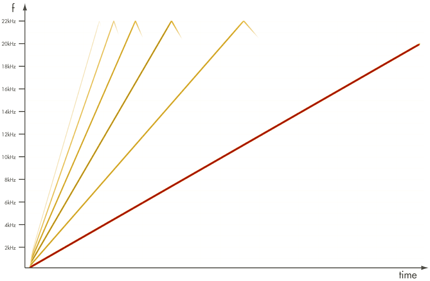
Alias-Free Harmonic Distortion
When a car accelerates, something strange happens to its wheels. At a certain speed they appear to slow down or even go backwards. This is due to aliasing, an effect which is also present when dealing with digital audio. You can hear this effect by sending a simple sine sweep through an (alias-producing) harmonic-distortion plug-in. Some strange, unwanted tones will occur. (Listen to the sample files below.)
Extra tones are produced when the frequency of the original tone reaches a digital audio limit called the Nyquist frequency, which is half the sample rate. The illustration below shows how a high-frequency signal is detected as a low-frequency alias. These aliases are an unwanted artifact that causes discordance when they have no harmonic relation to the initial signal. Harmonic distortion plug-ins produce aliasing when adding overtones with frequencies higher than those present in the original audio. Reviver avoids aliasing by a combination of a higher internal sample rate and carefully designed filters.

The Alias Effect
Blue: Samples, Yellow: Original Signal, White: Alias Signal
Harmonically distorted sine sweep with aliasing.
This is a frequency-time plot of a simple sine sweep with harmonic distortion added using Reviver's serial mode with the alias filter turned off. You can see how the aliases are bouncing between zero and the Nyquist frequency.
Alternative content
Harmonically distorted sine sweep without aliasing.
This is the same sine sweep sent through Reviver. All the settings are the same, but now the alias filter is turned on. We see that there are no aliases in the audible area (below 20kHz).
Alternative content

